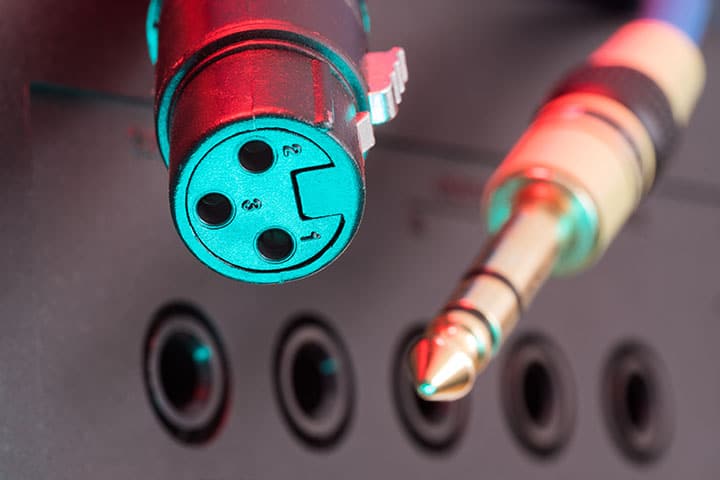We have become so reliant on headphones to take us away from the hustle and bustle of our busy lives.
Whether I’m busy in my garage or doing chores around the house, I wear them, so I don’t bother everyone with my apparent bad taste in music and my wifey listens to her podcasts.
Have you ever stopped to appreciate how awesome they actually are and how much they add to our lives? It makes you think about the technology and the ingenuity that has made it all possible. And, I’m sure you’re wondering,
How are headphones powered?
All headphones, except for Bluetooth headphones, which have a built-in rechargeable battery, get powered from the devices that they are plugged into. Headphones get powered through the jack, which transforms audio waves into electricity through its amplifier.
Power is at the core of how your headphone works, no power, no sound.
Well, like any electrical device, headphones require power to run, but how much power they require to run depends on the device you’re using. Before I go into detail about this, let’s have a look at the history.
Invented way back in 1919 (that’s more than 100 years ago!), headphones actually originated from the telephone receiver earpiece.
Since there were no amplifiers back then, this was the only way people could listen to electrical audio signals.
Then, in 1937, in Germany, the first fully functional headphones were invented. They figured out a way to power what is today the modern headphone.
Where do wired headphones get their power from?
Headphones get their power from whichever device they are plugged into. Headphones are basically just small speakers. The jack amplifies the audio waves, transforming this into electricity that powers the headphones.
Some headphones require more power than others, but that depends on what type of headphone it is. When you then plug them into either your device or PC, they will get powered through the jack’s amplifier.
In order for you to get sound to your headphone from your phone or computer (which has a digital-to-analog converter), it has to convert a digital signal from the device to analog.
This will, in turn, pass through the amplifier to the headphone’s driver. All headphones use analog signals to operate.
There are many different types of headphones, and all consume different amounts of power. While consumption doesn’t differ much in normal headphones, it can vary substantially in higher quality models.
It all starts and ends with the headphone jack
You can almost say that the jack is the headphone’s lifeline. This is the part that not only connects directly to your devices (computer, tablet, smartphone) to receive the audio, but also powers the whole thing.
The jack is made up of three separate parts and used to be called TSR because of these parts: the Tip, the Sleeve, and the Ring.
If any one of these three parts is damaged, the jack will not be able to function. Therefore, they are all equally important in order for your headphones to function properly.
What makes out the 4-conductor TRRS connection?
To check if you have a 4-conductor TRRS connection, just note how many rings your Jack has. If there are two rings (between three lines – don’t confuse the lingo – I’ll explain this in more detail next), it’s a 4 conductor plug. In this case, TRRS stands for Tip/Ring/Ring/Sleeve.
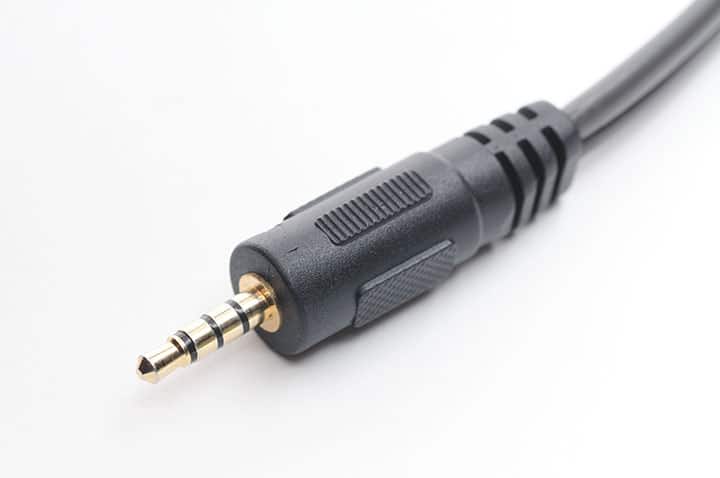
Ok, so before we get ahead of ourselves, let’s look at the anatomy of our friend Mr. Jack in more detail.
This will help you understand your Jack intimately (is this getting weird? Oh well).
Anatomy of a Headphone Plug
Conductors
This is what I was talking about earlier; conductors are the contact points on your jack. Depending on where they are, they will have a different name and function. Your jack can have a minimum of two conductors, but other will have as many as 5.
Identifying conductors
First off, let’s start the bare minimum. For a jack to be, well, a jack, it needs a Tip and a Sleeve.
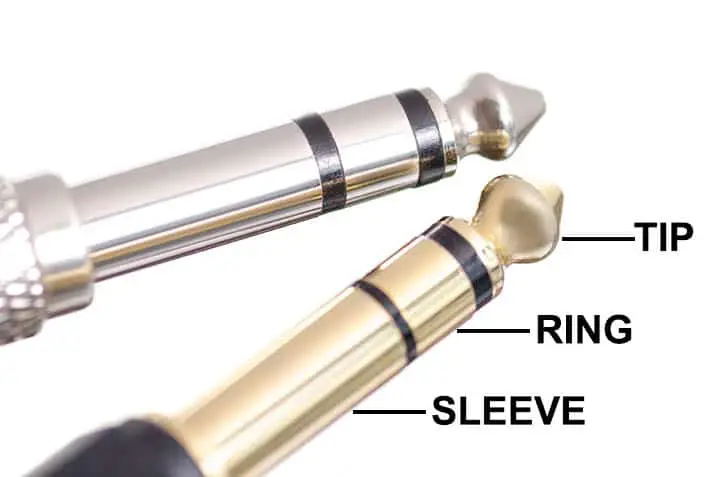
The number of rings a conductor has is what differentiates it. As I said, the dark stripes are not the rings. The bits between the dark stripes are the rings. Thus:
- If it has one ring (but two stripes), it’s a 3 conductor plug or a TRS connector.
- If it has two rings (but three stripes), it’s a 4 conductor plug or a TRRS connector.
What are the black stripes on my headphone jack?
They are actually insulation bands – meaning they don’t actually conduct any electrical signals. They protect the different parts of the jack, ensuring that they don’t cause a short.
How to know what Jack you have:
To identify the nomenclature of your Headphone Plug is easy:
- 2 conductor plug, 2 rings, TS
- 3 conductor plug, 3 rings, TRS
- 4 conductor plug, 4 rings, TRRS
- 5 conductor plug, 5 rings, TRRRS
Different Plug Connectors configuration
To configure means to arrange the way something is organized, so that it can be used for a particular task. In the case of your jack, the configuration of each part, the tip, the ring, and the sleeve, depends on the type of conductor you have.
Most manufacturers stick to certain guidelines so devices can be used interchangeably (and no, Apple is not one of them). So, it’s important that the Jack and the plug fit each other.
2 conductor jack (TS)
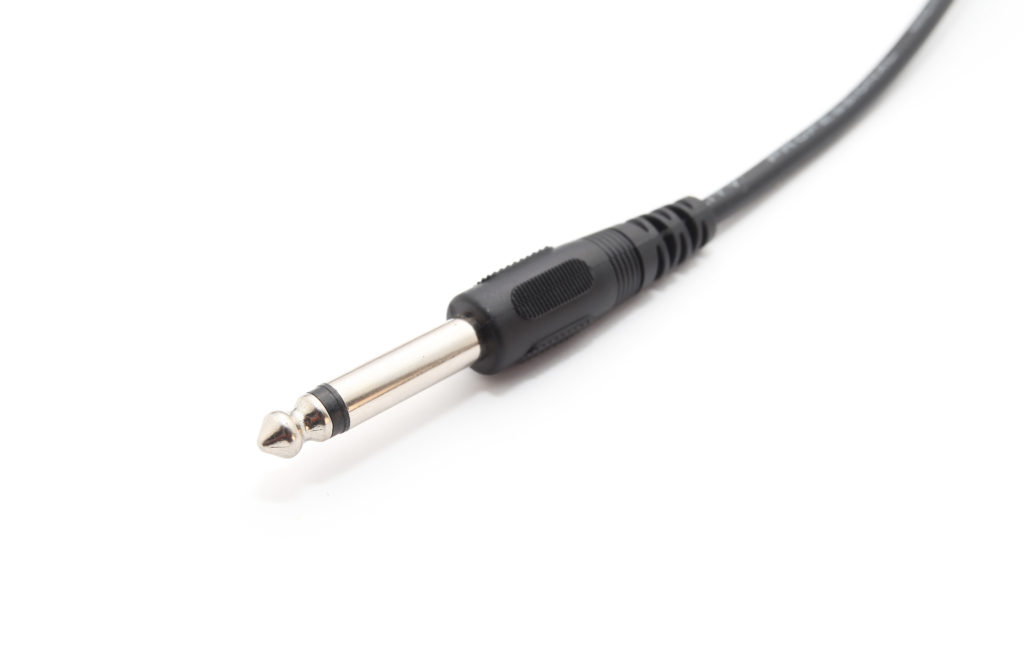
First, let’s start with some context. The TS jack is mostly used in electric instruments and audio devices that don’t need a long cable connection.
The function of each connection point:
This is the most basic connection. One connector is used to carry the audio signal (let’s say the ACDC tunes you’re strumming on your electric guitar) to your speakers, while the other acts as a return path and ground. The ground serves as a reference point for the signal and helps to eliminate interference.
| Connector | Function |
| Tip | Carries the signal |
| Sleeve | Grounds and returns |
3 conductor jack (TRS)
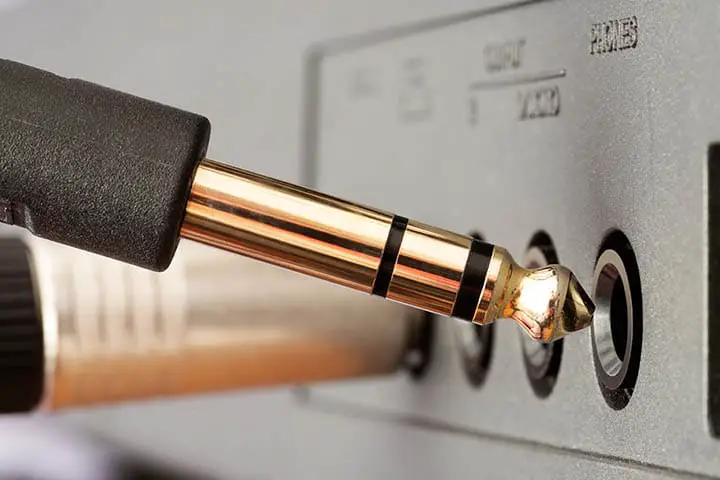
The three conductor jack is the most common of all connectors. The headphones you get on flights are TRS connectors. Why? Because they don’t have microphones. Let’s explore a bit deeper.
Function of each connection point:
Now things start to get a bit interesting, by adding the additional ring conductor “R”, we can suddenly do a bit more with your headphones.
It can now support mono signals and unbalanced stereo signals. We can now listen to audio signals received by the jack, or we can send complex signals back, But, alas, we can’t have both.
You’ll notice that it’s getting a bit more complicated. That’s because this jack needs to be configured for a specific purpose:
- An unbalanced Mono jack could be used to send signals received from a mic (don’t drop it please, headphones can easily break).
- A balanced mono audio cable carries two copies of the same incoming audio signal, referred to as a “hot” and “cold” signals. The difference between the hot and cold signals is that they are reversed in polarity. This means as they travel up the same cable, they actually cancel each other out. Reducing noise.
- An unbalanced stereo signal is very similar to a balanced mono, except for the fact that it can receive two different signals.
| Pin | Unbalanced Mono | Balanced Mono | Unbalanced Stereo |
| Sleeve | Ground | Ground | Ground |
| Ring | Optional (Mic etc) | Cold Signal | Right Audio Channel |
| Tip | Signal | Hot Signal | Left Audio Channel |
TRS connectors can only deliver unbalanced Stereo, for balanced stereo, we need the mighty TRRRS connector (ok, not so mighty, but still pretty dang powerful). We’ll get to that right after our all-time favorite (just because it comes with most of our devices – yay for freebies) the TRRS.
4 conductor plug (TRRS)
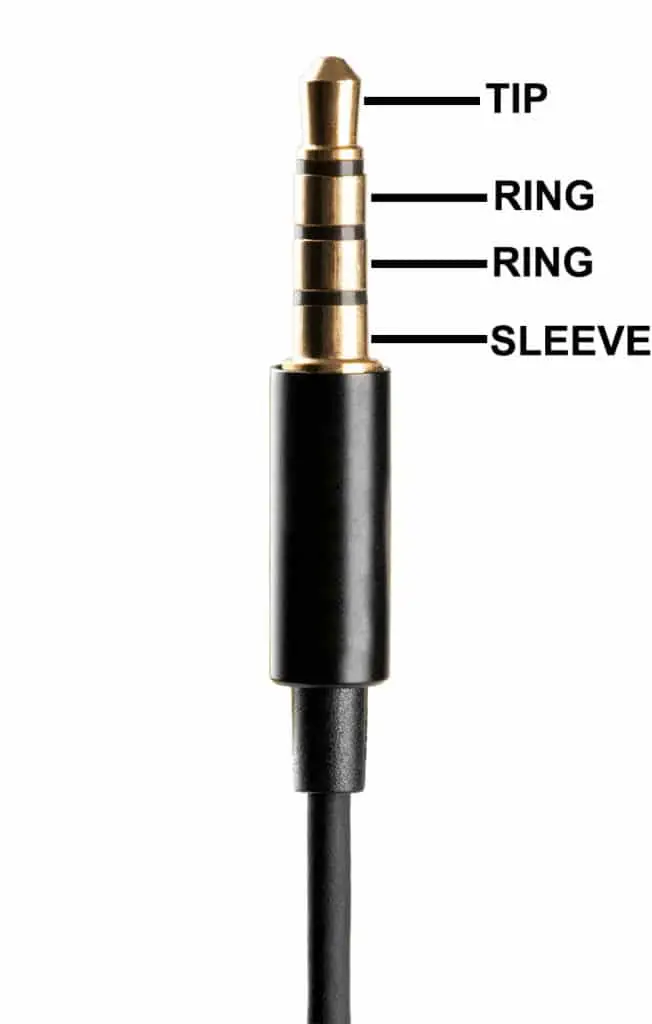
Baby steps, it’s getting better (I don’t know about you, but I’m starting to look at my jack differently). The 4 conductor jack is the one we all know and love.
We use it with our phones, PS4 (check out my post on the best PS4 headphones), and everything else because it can support a microphone and stereo audio connection at the same time. Meaning, we can make a call, or laugh at someone when we kill them in World of Warcraft.
Function of each connection point:
So, things get mixed up a bit here. You’ll notice that the Sleeve is now the microphone (whereas for TS and TRS, it’s the ground). The ground moves to the first ring, and the audio signal (finally) has dedicated connection points.
| Pin | Function |
| Sleeve | Microphone |
| Ring 1 | Ground |
| Ring 2 | Right Audio Channel |
| Tip | Left Audio Channel |
So, while the development of the TRRS solved many issues (we could now have a two-way conversation), it still left audiophiles wanting more… So they did something about it.
5 conductor plug (TRRRS)
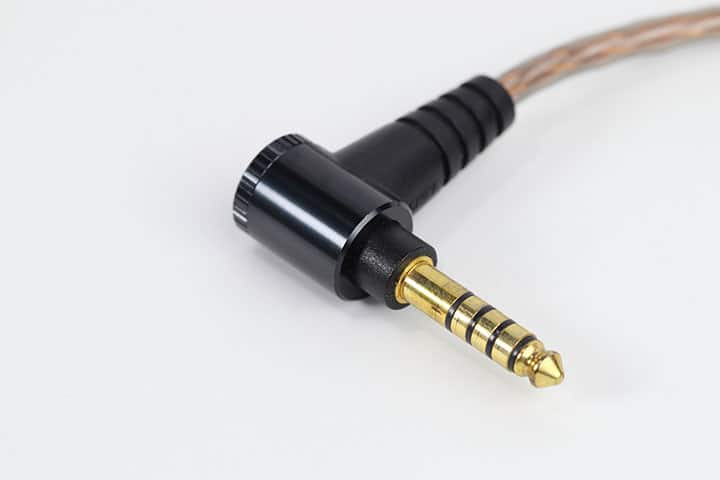
The holy grail. The mother (and father) of all Jacks. The TRRRS connector. This baby has been used in the professional audio market for decades. The reason being that it supports balanced stereo signals.
While the Jack is a common design for TRRRS connectors, there is another design that is gaining popularity in stereo balanced headphones.
The XLR connector (3 pin pairs, 4 pin, and 5 pin) is mostly used for professional gear, but as people realized just how amazing balanced headphones are, the XLR quickly became the go-to for the best quality audio.
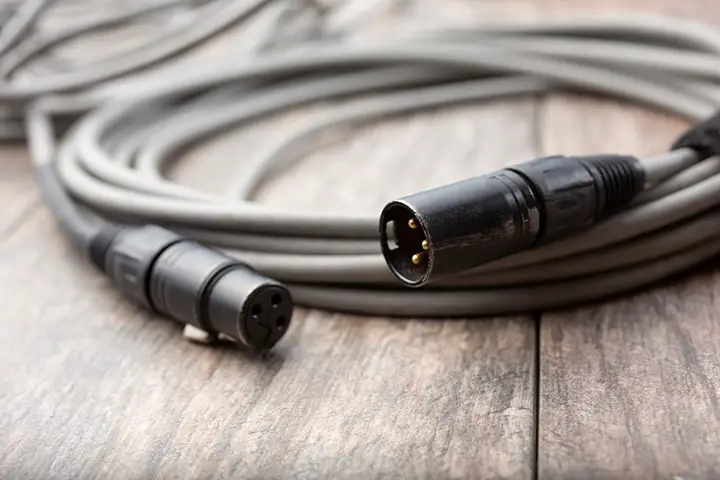
I’m sure you recognize the above: The beautiful XLR5 Female to the left and the XLR5 Male to the right.
By now, people are slowly becoming used to different connectors (thanks to Apple). The XLR connector deviates from the standard design and opts for pins instead of one single plug.
It works in the same way though, the XLR5 connector has 5 pins, just like a TRRRS has 5 connectors.
Sony also deviated not too long ago; they opted for a 4.4mm Pentaconn connector. Clever name if you think of it, “penta” meaning five (pins) and “conn” short for “connector”.
While these aren’t widely used, you can get an adaptor if you wanted to, or purchase a compatible Sony amplifier.
There you have it, a very detailed and complete explanation of the anatomy of your headphone jack (and every other jack available) and why each adds to the quality of audio you get from your headphones.
How much power do headphones typically draw from an audio source?
Most headphones only need to power the small drivers in the speakers. So, they don’t really need to draw that much current from the audio source. The louder you listen to your music, though, the more power it will take.
For example, earbuds have a very low sound level (they don’t need to blast the music, they’re right there by your eardrums).
They typically use around 10-20mV of power. Headphones, on the other hand, can feature a much heavier bass sound.
So when you use them on the loudest setting, it can use up to 1500mV of power. But, even this is still not really considered that much power.
When it comes to powering up wired headphones, you need to actually be listening to them in order for them to draw power.
In other words, when they are only connected (no sound being played), there is zero power consumption.
Headphones of a higher quality, which usually used by professionals, will draw more power. The upside to using these types of headphones is most definitely the amazing sound quality and added features that they have to offer. The more standard headphones wouldn’t offer the same.
Professional headphones normally have extra features like noise cancellation, and not to worry about this draining your battery because normally, additional batteries are built-in.
They are also usually larger in size and shape, but the premium materials mean they could even be lighter than normal headphones. If you are curious about how much power you’ll be using, this is usually clearly stated with every unit.
For all the science buffs out there, the resistance (impedance) rating determines the power the headphones need. The power (current) will go up, when the device has a lower impedance, such as in the case of speakers.
However, consumption will go down with devices that have a higher impedance, which is the case with headphones that have a rate of 32 ohms or more.
Headphones will use around 10mV – 20 mV with 32 ohms of impedance. This will result in 3V-3.4V peak operating voltage.
Do wired headphones drain battery power?
Yes, when you connect your headphones (which act as speakers), to your phone, they can drain some of your device’s power. Some headphones (commonly used and shipped with mobile phones) won’t drain a lot of battery by themselves because they are very light in power consumption.
However, a common misconception is that basically everything you plug in will drain your battery. Thanks to all the clever people out there, our phones and different operating systems are designed to know when to use battery life and when not.
When a feature is not in use, it won’t power them up. So, typically, high-quality headphones used in smart devices won’t drain any power.
If you experience that a lot of your battery is being drained, it could, in fact, be specific apps you’re using.
They could have special settings that allow them access to the microphone, for instance. Check out your settings (or the power consumption of specific apps) after having your headphones plugged in for a while. This should solve the problem.
When in use, your battery could drain a bit faster if you have high-quality headphones. This is because they will produce a very clean sound with much less distortion, and they need more power to do this.
But, this again depends on how high you have the volume and the app that you are using for sound reproduction.
I’ve experienced this frustration many times myself. While listening to music, I’ll go through my emails, play a game or two, get lost on Instagram.
Then, in what feels like no time at all, I’ll be staring in amazement at how fast my battery has dropped.
Then, without considering the health risks, I just put my phone on charge while going on like normal, especially when I know I’ll be on my phone for some time.
So, moral of the story, if you forgot to unplug your headphones, you don’t need to worry about it draining the battery. But, of course, you will see it drop pretty quickly as soon as you watch a video or something.
Remember, if you can, use simpler apps to stream music, which will consume less battery, while you will be able to listen much longer.
Low-impedance headphones
Yes, low-impedance headphones (usually <20 ohms) do use less power… but they also usually deliver very low-quality sound and are mostly of poor design. Basically, low impedance headphones will use less power to push forward the sound because the quality of the sound is also lower.
They often are sold at ridiculously low prices (go figure), so just keep that in mind next time you see a “bargain” on Amazon.
High-impedance headphones
Audiophiles rejoice – the polar opposite of low-impedance is high-impedance. This tech is usually found in high-quality audiophile approved headphones.
Not only will you experience great sound quality, but you will also have the assurance that your headphones will last longer (better quality materials), and they will provide more comfort when wearing them.
High-impedance headphones come with an increased amount of impedance (usually <36 ohms).
The higher the quality of sound, the more battery power is needed to push the current through to the speakers.
The scale definitely tends to tip towards the high-end product. Yes, you will lose some battery power, but you will be knocked out of the park by the great sound.
Does headphone volume affect battery life?
Yes, it does. No matter the device or the quality of the headphones, the more you increase your volume the more battery power you will use. This is because the power needs to push the higher volume to the speakers. However, different devices have different sized batteries, some of which will drain quicker than others.
Let’s have a look at how some of the different devices are affected by playing higher volumes. Surprisingly, there isn’t such a huge difference as you would tend to think.
The battery consumption on wired headphones is definitely a bit more than that of wireless. So, even though some phones nowadays have really great built-in batteries, it has to power your headphones completely.
Even so, as long as you don’t also use other apps and keep the volume at a reasonable level, your battery should last quite a while.
With wireless headphones, you have a bit of an advantage. Compared to wired headphones, your Bluetooth connection will draw less power from the device when you increase the volume.
Plus, and this really is a plus, your wireless headphones have their own built-in battery, partially splitting the power used.
Your headphone battery will have to process the Bluetooth data and amplify the signal to create the sound. Drawing less from your phone or media player.
Ok, so in technical terms, with lower quality devices, you will mostly have class A amps, with only a single transistor driving the amp.
With this lower power, you will only be able to reach certain volumes, an output of 0 – 10 V roughly. This also states the obvious – the higher you put your volume, the more battery you will use.
More powerful devices would have two transistors. One of them will pull up, and the other one will pull down.
So, it would be able to handle higher volumes, but this will use more battery power because the processing will be in overdrive.
The sound, though, is totally worth it. With a higher processor, not only can you go louder, but you can hear more channels (instruments or beats) than won’t come through otherwise.
The limit on how much power you can draw from a headphone jack
This answer always depends on the device and the size and quality of the jack. Because each device has its own output, each jack receives it differently.
Inside the microphone connection across its two contacts, there is a small voltage typically from 1 to 5 volts. On smartphones, the plug-in power is around 2 V and will be supplied as +2V on the microphone (sleeve) conductor.
Just looking at your average iPod jack, you’re sitting with an output of about 2.1 and 2.9 volts. But this will vary depending and a few things like the make and model of the iPod and the age of the device.
The better the quality of the headphones, the more power it can receive.
Power consumption of USB vs audio headphones
Ok, so USB headphones have some clear advantages. They usually have better sound quality compared to traditional audio headphones due to the dedicated built-in sound processing system.
They have been adopted quite extensively, especially in gaming, because they can easily connect to USB ports and USB cables. They also have better noise-cancellation, and all of this comes at a high-power currency.
For all the additional features, they often need a bit more juice. This usually isn’t an issue for gamers who play PS4 or PC games, as those devices are plugged in. But, it can be an issue on laptops or when used on a phone with an adapter.
Do Bluetooth headphones use more phone battery than wired headphones?
When considering the battery of the phone, Bluetooth headphones do actually consume more phone battery compared to wired ones.
This is because you draw extra electricity from devices to power Bluetooth modules and to transmit the signal.
If you have both types of headphones and your battery is on 50%, you’ll get more playtime by using your wired headphones.
In the end, your phone’s battery capacity naturally decreases over time. This will definitely be made worse by the sound settings you use, the type of headphones, and the frequency of use.
Do Bluetooth headphones drain their battery faster on playtime or standby?
If you’re anything like me, you put your phone on airplane mode when the battery is running low. It’s because all those signals that are transmitted for Bluetooth, Wi-Fi, etc. take a bit of battery.
While connecting your Bluetooth headphones won’t take as much power as when you’re actually playing music, it will take some.
On the plus side, Bluetooth headphones do have their own batteries, meaning they don’t drain that extra power from your phone or device. This, however, will be wasted if you just connect and do nothing.
So, rather only connect your headphones when you actually want to use them, and disconnect when you’re done.
Many quality headphones do have crazy battery life, though, so if you’re one of the lucky ones with the newest SteelSeries or Razer, just ignore all of that.
Conclusion
Well, there you have it, every way which and how your headphones are powered. The way power reaches your headphones is same same but different.
Headphones and the sound they produce are basically just electrical signals… so make sure the headphones you choose have the quality needed. To carry that signal to your ears.

